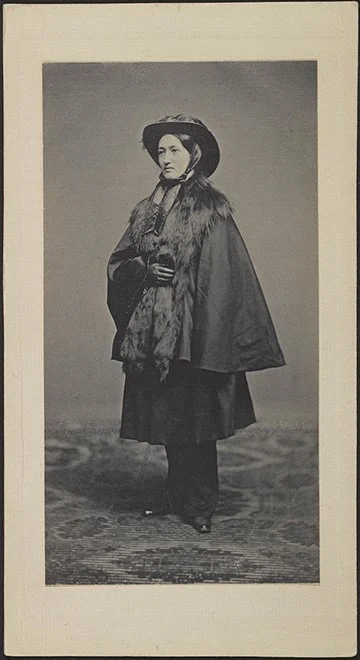Fashion Statements and Politics
A Powerful Union: Fashion and politics have always had complex and intriguing relationships. From the birth of the United States in 1776 to the present day, clothing has proven to be a remarkable tool for self-expression, resistance, and social change. It has functioned as a mirror reflecting societal values and as a catalyst for transforming them.
Since its inception, the United States has used fashion to express independence and patriotism. Consider the Revolutionary War era, when American colonists donned garments adorned with symbols of liberty, such as tricorn hats and tri-color cockades. These elements signaled their allegiance to the revolutionary cause and visually differentiated them from their British counterparts. Clothing became a powerful tool for unity and identity formation—a declaration of a new nation.
Elizabeth Smith Miller (1822–1911)
Library of Congress (011.00.00)
Throughout history, fashion has often been used as a form of protest and resistance against oppressive political systems. Clothing played a pivotal role in the fight against slavery and racial discrimination. During the abolitionist movement, women like Elizabeth Cady Stanton and Susan B. Anthony rebelled against conventional gender norms by adopting "bloomers," a short and practical garment that defied Victorian fashion standards. By doing so, they challenged societal expectations and demanded equality. However, it's important to note that both women succumbed to societal norms and resumed wearing dresses and skirts. It seems that they were, before their time, expressing an independent style even in protest.
Over time, clothing has also played a role in addressing gender inequality and women's rights, and the early 20th century witnessed the suffragette movement, with women fighting for their right to vote. These activists adopted specific attire, notably the white dress, purple sash, and green hat, as symbols of unity and resistance. By harmonizing fashion and politics, these suffragettes facilitated dialogue around female empowerment and challenged notions of women's limitations.
Suffragettes in England 1914 wearing white dresses.


